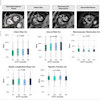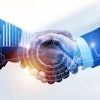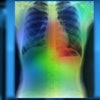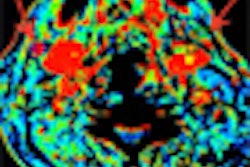
NEW YORK (Reuters Health), Jan 26 - Prompt treatment of subclinical and clinical seizures in newborns with hypoxic-ischemic encephalopathy (HIE) can potentially decrease brain injury, according to a prospective trial from Belgium and the Netherlands.
Neonatal HIE with seizures poses a high risk for death or neurologic disability, the investigators note in the February Pediatrics. They point out that a substantial proportion of neonatal seizures are subclinical, especially after the newborns have been given anticonvulsants -- but the drugs themselves can also have serious adverse effects.
The question, according to senior author Dr. Linda S. de Vries, at Wilhelmina Children's Hospital, Utrecht, and her co-authors, is whether treating both subclinical and clinical seizures in newborns with HIE -- as opposed to treating only clinical seizures -- would reduce the total duration of seizures and result in less-severe brain injury on MRI scans.
Neonatal HIE is diagnosed if at least three of the following are present: signs of intrauterine hypoxia, arterial cord blood pH less than 7.1, delayed onset of spontaneous breathing, Apgar score of no more than 5 at five minutes, or multiorgan failure.
In 138 such newborns, the authors used amplitude-integrated electroencephalography (aEEG) to monitor for seizures. Infants with clinical seizures were treated with antiepileptic drugs (AEDs). As soon as an infant had a subclinical seizure, he or she was randomized either to be treated for both clinical and subclinical seizure patterns (group A, n = 19) or for clinical seizures only (group B, n = 14).
There was a nonsignificant trend to decreased median duration of seizure patterns in group A (196 vs 503 min).
MRI was performed for 14 patients in group A and 11 in group B when they were 4 to 10 days old. In linear regression analysis, the authors found a significant relationship between the duration of seizure patterns and MRI scores (and degree of brain injury) in group B.
The authors also analyzed the appropriateness of treatment, that is, whether AEDs were given within two hours after the onset of seizures and whether another AED was given if no effect was seen in one to two hours.
In group A, treatment was appropriate for eight infants, leading to a significant difference in seizure duration compared to the babies who did not receive appropriate treatment (37 vs 248 minutes, p = 0.02). Infants treated appropriately for both clinical and subclinical seizure patterns received more AEDs within a relatively short period.
In group B, six infants were treated with AEDs for clinical seizures that could not be confirmed on aEEG. Four babies had seizure patterns for several hours before clinical signs were observed, and in five, seizure patterns persisted after AEDs were given, even though clinical signs had resolved. One infant with subclinical seizures received no further treatment after assignment.
Six patients in group A (32%) and seven in group B (50%) died in the neonatal period. Although recording time was shorter in the babies who died, they had longer duration of seizures than survivors (428 vs 164 min).
According to Dr. de Vries and her associates, "recognition and treatment of neonatal (clinical and subclinical) seizures in infants with HIE can reduce brain injury."
Pediatrics 2010;125:e358-e366.
Last Updated: 2010-01-25 11:47:13 -0400 (Reuters Health)
Related Reading
Neonatal MRI predicts cerebral palsy in neonates at risk, October 15, 2004
Copyright © 2010 Reuters Limited. All rights reserved. Republication or redistribution of Reuters content, including by framing or similar means, is expressly prohibited without the prior written consent of Reuters. Reuters shall not be liable for any errors or delays in the content, or for any actions taken in reliance thereon. Reuters and the Reuters sphere logo are registered trademarks and trademarks of the Reuters group of companies around the world.



















